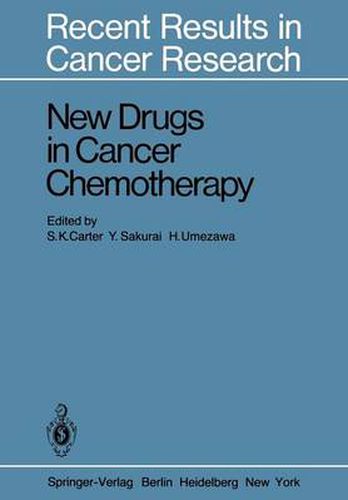Readings Newsletter
Become a Readings Member to make your shopping experience even easier.
Sign in or sign up for free!
You’re not far away from qualifying for FREE standard shipping within Australia
You’ve qualified for FREE standard shipping within Australia
The cart is loading…






This title is printed to order. This book may have been self-published. If so, we cannot guarantee the quality of the content. In the main most books will have gone through the editing process however some may not. We therefore suggest that you be aware of this before ordering this book. If in doubt check either the author or publisher’s details as we are unable to accept any returns unless they are faulty. Please contact us if you have any questions.
The Analog Potential in Cancer Chemotherapy in the United States and Japan S. K. Carter Northern California Cancer Program, 1801 Page Mill Road, Building B, Suite 200, USA - Palo Alto, CA 94304 The bilateral collaborative program in cancer research between Japan and the United States is one of the oldest programs of this type. It is sponsored in the United States by the National Cancer Institute [1], while in Japan the sponsoring organization is the Japan Society for the Promotion of Science. Annual symposia concerning treatment have been held and in recent years they have been published [2, 3]. Drug development in both Japan and the United States has evolved over the years to an increasing emphasis on second generation compounds. This has come about as a result of the initial successes of chemotherapy development. Many active structures have been uncovered and the armamentarium of the medical and pediatric oncologist has grown dramatically. The uncovering of an active structure provides an opportunity for analog synthesis and attempts at elucidating structure-activity relationships. It is hoped that the therapeutic index of active structures can be improved so as to achieve superior clinical results.
$9.00 standard shipping within Australia
FREE standard shipping within Australia for orders over $100.00
Express & International shipping calculated at checkout
This title is printed to order. This book may have been self-published. If so, we cannot guarantee the quality of the content. In the main most books will have gone through the editing process however some may not. We therefore suggest that you be aware of this before ordering this book. If in doubt check either the author or publisher’s details as we are unable to accept any returns unless they are faulty. Please contact us if you have any questions.
The Analog Potential in Cancer Chemotherapy in the United States and Japan S. K. Carter Northern California Cancer Program, 1801 Page Mill Road, Building B, Suite 200, USA - Palo Alto, CA 94304 The bilateral collaborative program in cancer research between Japan and the United States is one of the oldest programs of this type. It is sponsored in the United States by the National Cancer Institute [1], while in Japan the sponsoring organization is the Japan Society for the Promotion of Science. Annual symposia concerning treatment have been held and in recent years they have been published [2, 3]. Drug development in both Japan and the United States has evolved over the years to an increasing emphasis on second generation compounds. This has come about as a result of the initial successes of chemotherapy development. Many active structures have been uncovered and the armamentarium of the medical and pediatric oncologist has grown dramatically. The uncovering of an active structure provides an opportunity for analog synthesis and attempts at elucidating structure-activity relationships. It is hoped that the therapeutic index of active structures can be improved so as to achieve superior clinical results.